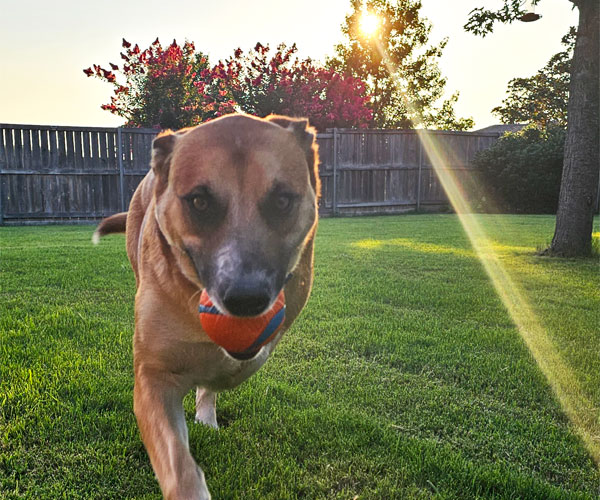Your Dog’s Love Of The Ball Traces Back To Their Wolf Ancestry
Date: 11/16/2024

Nearly eight in every ten dogs love to play fetch, a new paper in the PLoS ONE journal reveals. Highly-trainable breeds — Border Collies, Golden Retrievers, Labradors, and English Cocker Spaniels —, and especially males, were found to be the most likely to partake in fetching behavior. If your dog loves to fetch, you’ve probably wondered what’s behind their (sometimes maddening) obsession. Although the science isn’t conclusive, some researchers surmise that a dog’s impulse to chase and catch the ball is a manifestation of their ancestral prey drive, and is rewarding on an instinctual level.
Tapping into your dog’s hunting instincts
The domesticated dog is, of course, a descendant of the wolf, who hunts, chases, and kills its prey. In wolves, the predatory sequence goes: “hunt > orient > eye > stalk > chase > grab-bite > possess > kill-bite > dissect > consume.” Now, think about how some of this behavior may be mirrored in your dog’s obsession with the ball. The way the ball moves is fast and unpredictable, which simulates the chase for prey. And, once they catch the ball, dog’s are also often compelled to chew — this mimics the “kill-bite” part of the preceptory sequence.
Some dogs even try to complete the “dissect” and “consume” phases when they tear up and even eat the ball. But, this is obviously bad for your pup, and should be discouraged. Not only do balls pose a choking risk, but they also often contain synthetic chemicals that aren’t good for dogs to consume.
Triggering a dopamine release
Chasing the ball also activates the reward center in your dog’s brain, which makes the activity highly-pleasurable. As the ball represents prey on an instinctual level, its pursuit is inherently rewarding, and triggers the brain’s release of dopamine — a happy, feel-good chemical. Your dog therefore becomes motivated to repeat the activity as much as possible. If needed, treats can also be used as further positive reinforcement to train your dog to fetch correctly.
In fact, Los Angeles Dodgers star, Shohei Ohtani, showed the world just what amazing feats a well-trained dog is capable of in the opening of a recent game against the Baltimore Orioles. Ohtani, nicknamed the “Japanese Babe Ruth”, has made a name for himself by becoming the first player in Major League Baseball history to achieve 50 home runs and 50 stolen bases in a single season. Ohtani’s dog, Decoy, a Dutch Kooikerhondje, is equally impressive as the pup successfully “threw out” the game’s first ceremonial pitch. In what was akin to a high-stakes game of fetch, Decoy picked up the ball from the pitcher’s mound, and carried it to Ohtani behind the plate. The pair high-fived, and Decoy was rewarded with a tasty treat. According to Ohtani, they had practiced the routine together for three weeks in order for it to go off without a hitch on game day.
But, it’s also worth noting that it’s also often the pursuit of pleasure that triggers dopamine, just as much as the pleasure itself. So, for your dog, much of their enjoyment comes simply from the chase regardless of whether there’s a tangible reward. In fact, in dogs with powerful prey instincts (Border Collies, Huskies, and Airedale Terriers, for instance), the opportunity to satisfy this instinctual drive is often enough of a reward.
Although your dog’s love for the ball may be obvious, there’s actually science to explain why this is. The thrill of the chase, catch, and chew taps into their wolf ancestry and satisfies natural desires. So, the next time your dog drops their ball at your feet, you’ll now have a better understanding of what exactly drives their love for their favorite toy.